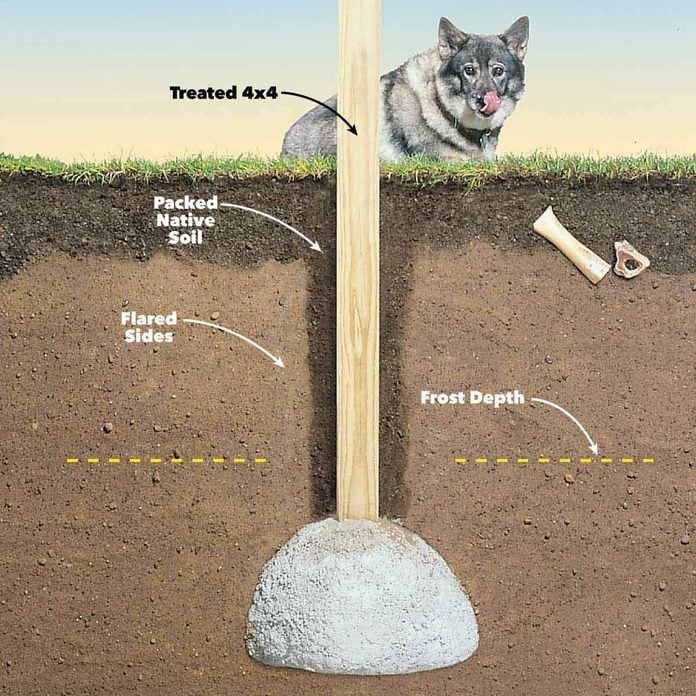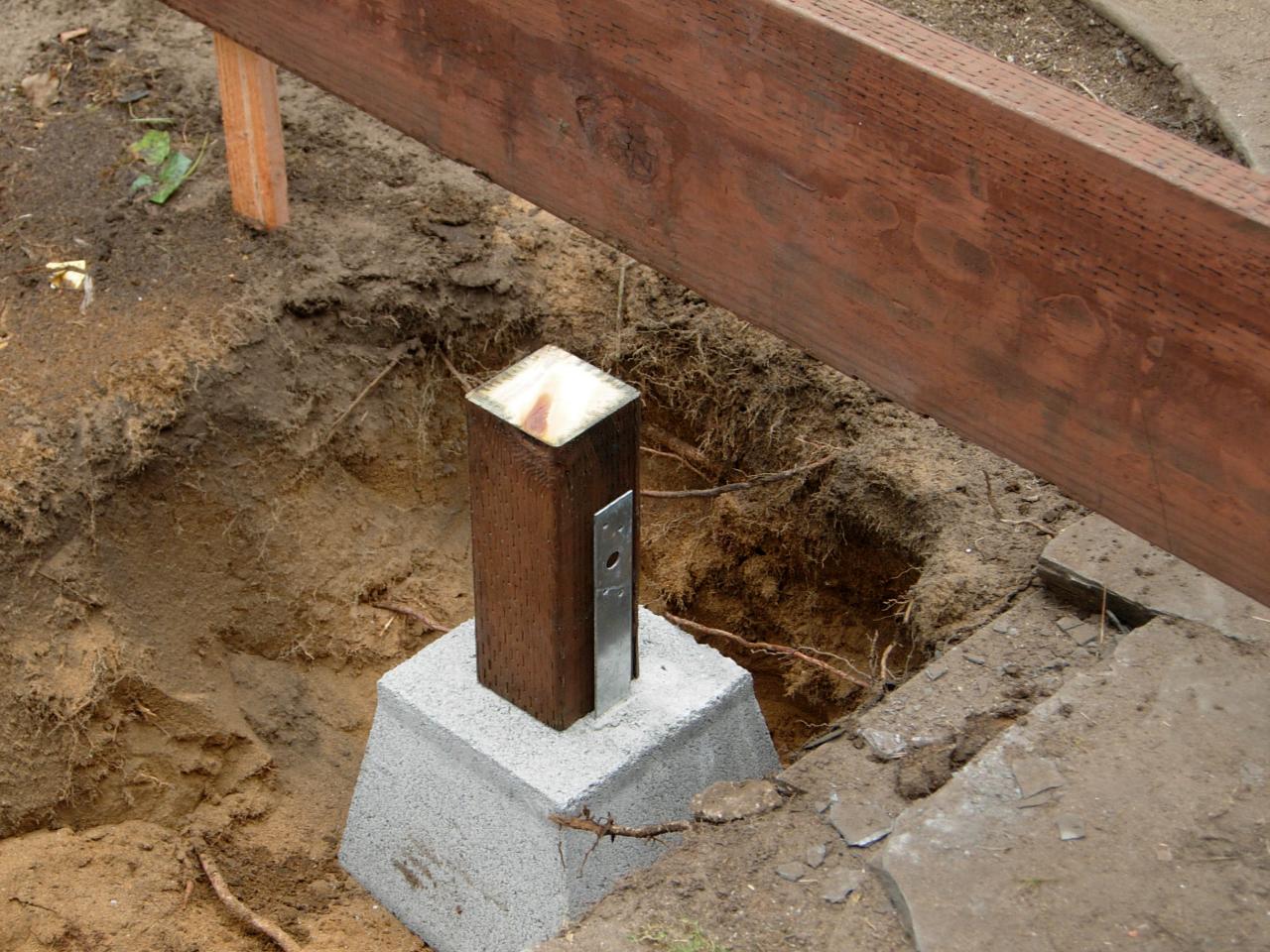Ensure Security and Long Life With Correctly Mounted Deck Footings
Deck grounds might not be the most extravagant aspect of deck building, yet they play an important duty in ensuring security and long life. Correctly set up grounds offer a strong structure for your deck, preventing typical concerns like sagging, shifting, and also collapse. Selecting the ideal kind of ground and properly mounting it can be a complex process. In this discussion, we will certainly explore the significance of appropriate deck grounds, factors to think about throughout installment, different types of grounds readily available, step-by-step installment overview, and maintenance suggestions for making certain durable footings. So, if you desire to ensure the security and longevity of your deck, keep checking out to find the vital understandings to attain a resilient and structurally sound outside area.

Significance of Correct Deck Grounds
Why are effectively installed deck footings vital for the security and long life of your deck? The answer depends on the essential function that deck grounds play in sustaining the weight of the whole structure. Deck footings are the foundation on which the deck rests, transferring the tons from the deck to the ground. It can lead to a range of issues that compromise the security and durability of the deck. when footings are not properly mounted.
First of all, appropriately set up deck footings distribute the weight of the deck evenly, preventing any irregular settling or sinking. This is specifically vital in locations with unsteady soil, as it helps to minimize the threat of the deck changing or breaking down. In addition, well-installed grounds make sure that the deck stays level, protecting against any kind of structural damage that can occur when a deck comes to be irregular.
Secondly, properly mounted grounds supply a solid support for the deck, stopping extreme movement and guide. This assists to maintain the architectural stability of the deck, decreasing the risk of crashes or injuries. It also decreases the deterioration on the deck, allowing it to hold up against the components and routine use for a longer duration of time.
Elements to Take Into Consideration for Deck Footing Installation
When mounting deck footings, there are numerous essential variables to think about for correct setup. These factors can substantially affect the security and longevity of your deck. You need to establish the type of dirt on which the deck will certainly be developed. Various soil types have various load-bearing capacities, so it is vital to conduct a soil examination to ensure the footings can sustain the weight of the deck and its occupants. Furthermore, the area and layout of the deck must be carefully prepared to stay clear of any challenges such as trees, energy lines, or below ground pipelines. It is also essential to take into consideration the neighborhood climate and climate condition, as these can influence the resilience of the footings. As an example, areas with a high water table might call for additional measures to avoid water damages. Lastly, the size and product of the grounds need to be picked based upon the dimension and weight of the deck, along with the neighborhood building codes and regulations. By considering these factors, you can ensure the correct installment of deck grounds and appreciate a stable and durable deck.
Sorts Of Deck Footings to Select From
There are a number of different kinds of deck footings available for you to pick from. Each type has its very own advantages and disadvantages, so it's vital to consider your certain needs and the problems of your deck before deciding.
One usual kind of deck ground is the concrete footing. This involves digging openings in the ground and putting concrete into them to create a strong foundation. Concrete footings are durable and provide superb security, making them appropriate for decks in areas with difficult soil conditions or high wind loads.
An additional choice is the helical pier footing, which contains a steel shaft with helical plates that are screwed right into the ground. These footings fast to install and can be used in numerous dirt types, consisting of sandy or clay dirts. They are also flexible, enabling simple progressing of the deck.
Sonotube grounds are another popular option. These footings are developed by putting a cardboard tube in a hole and loading it with concrete. Sonotube footings are reasonably simple to install and give appropriate stability for smaller sized decks or in areas with less requiring soil conditions.

When choosing the type of deck footing, it's vital to take into consideration variables such as dirt problems, deck dimension and weight, neighborhood building ordinance, and individual choices. By picking the proper ground type, you can make sure the stability and durability of your deck.
Step-by-Step Guide for Installing Deck Footings

Establish the location: Begin by noting the exact setting of each ground using stakes and string (Deck Footings). Take right into account any regional building regulations or regulations relating to trouble distances
Dig the holes: Make use of a post hole miner or an auger to dig the openings for the grounds. The depth will rely on the frost line in your location and the sort of soil. Typically, a deepness of a minimum of 36 inches is recommended for stability.
Degree the holes: Guarantee that the bottoms of the openings are level (Deck Footings). This can be attained by utilizing a level or a straight board across the top of the holes
Include crushed rock: Location a layer of gravel at the bottom of each hole to improve drainage and protect against the footing from sinking into the soil in time.
Place the footing types: Place the footing forms into the holes, ensuring they are focused and degree. Usage risks to protect them in position.
Mix and put concrete: Adhere to the guidelines on the concrete mix bag to prepare the concrete. Put the concrete right into the footing types, filling them completely.
Smooth the surface: Use a trowel to smooth the surface area of the concrete and get rid of any kind of air pockets. Enable the concrete to treat according to the maker's directions.
Maintenance Tips for Lasting Deck Footings
Appropriate maintenance is vital for guaranteeing the long life and security of deck footings. By on a regular basis examining and keeping your deck footings, you can protect against damage and potential security risks.
Normal cleaning is likewise important for keeping deck footings. Dirt, plant life, and particles can accumulate around the footings, which can cause moisture buildup and decay. Cleaning up the grounds routinely, utilizing a pressure or a brush washer, can assist protect against these issues and extend the life expectancy of your deck.
Along with cleansing, it is essential to keep the location around the grounds see page clear of any obstructions. Avoid stacking products versus the grounds or permitting plants to expand too close to them. These obstructions can trap wetness and trigger the grounds to wear away over time.
Lastly, regular resealing of the footings is suggested to secure them from dampness and various other ecological variables. Using a waterproof sealant can help prevent water damage and extend the lifespan of the footings.
Conclusion
To conclude, proper installation of deck footings is important for making sure security and click site durability of your deck. Aspects such as soil type, load capacity, and local building ordinance need to be considered when picking the right type of deck grounds. Following a step-by-step guide for installation and normal maintenance will help to guarantee the footings stay durable and long-lasting.
In this discussion, we will certainly discover the value of appropriate deck footings, elements to consider during installment, various kinds of grounds readily available, detailed setup guide, and maintenance pointers for making certain resilient footings. Deck footings are the structure on which the deck relaxes, transferring the load from the deck to the ground.One usual type of deck footing is the concrete footing. Insert the ground types: Place the footing creates right into the holes, guaranteeing they are focused and level.In verdict, correct setup of deck footings is crucial for making certain security and durability of your deck.